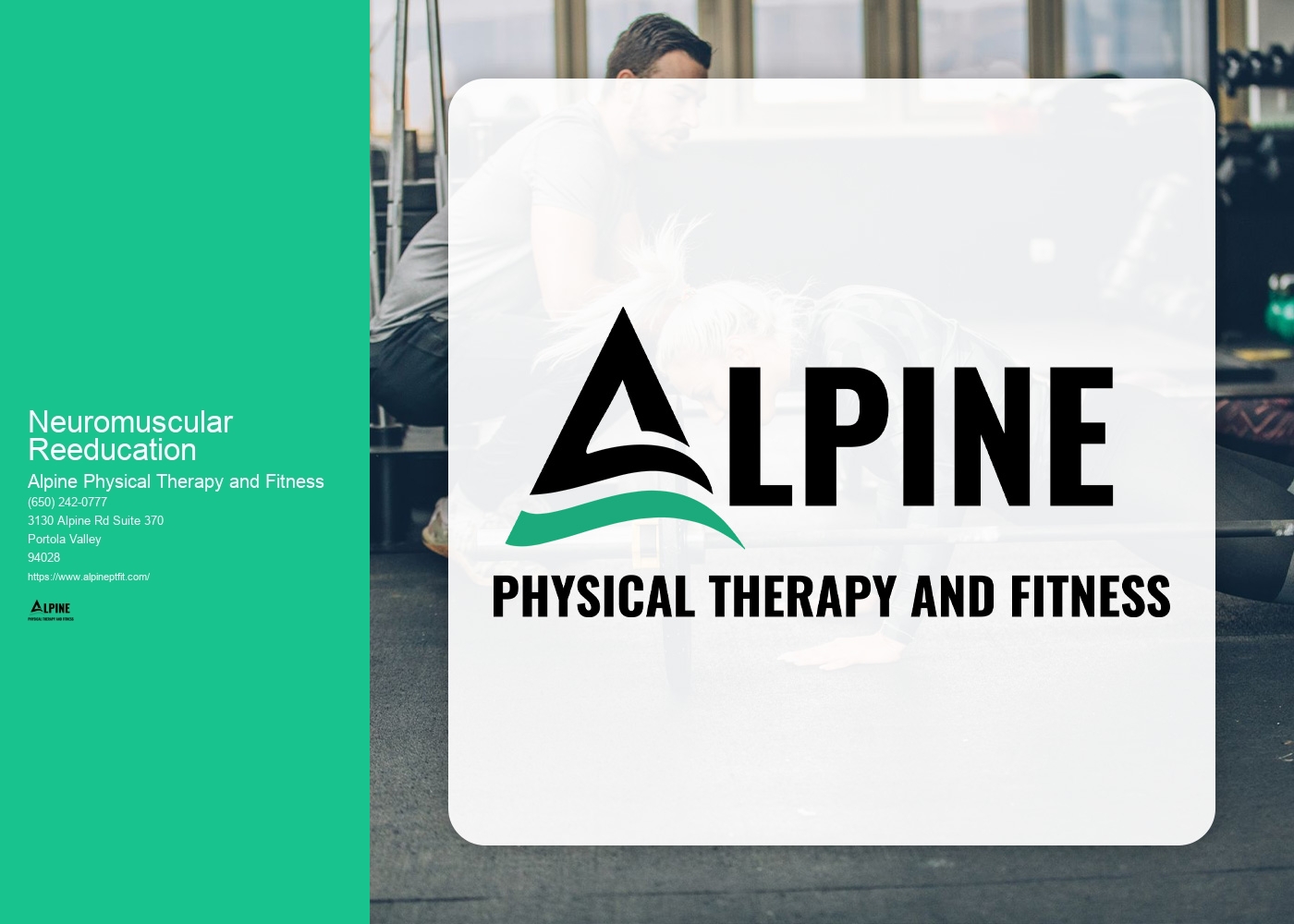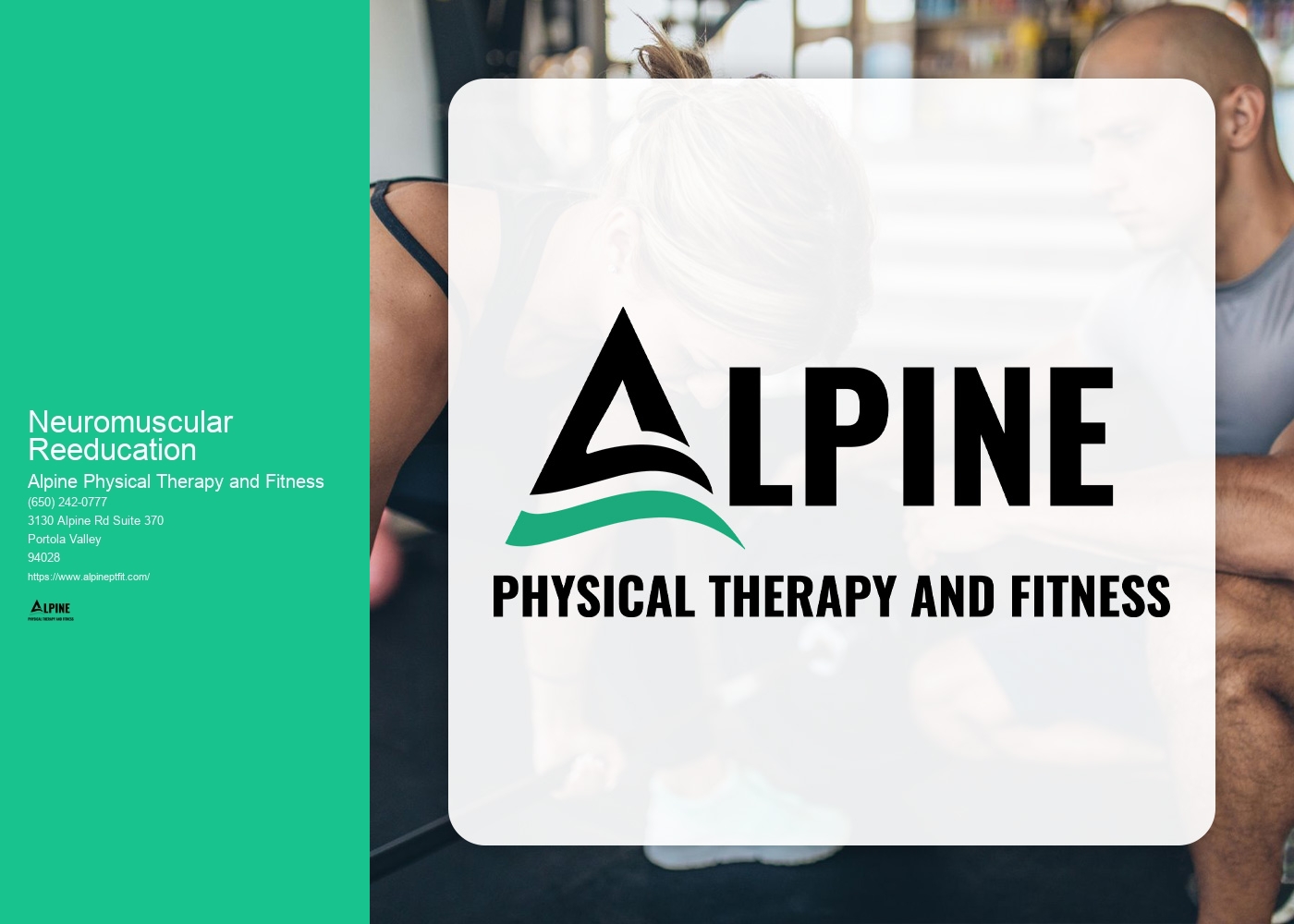

Neuromuscular reeducation is a therapeutic technique that focuses on retraining the neuromuscular system to improve muscle function and movement patterns. It involves a series of exercises and movements designed to restore proper muscle activation and coordination. By targeting specific muscle groups and engaging in repetitive movements, neuromuscular reeducation helps to correct muscle imbalances and improve overall muscle function.
Muscle imbalances occur when certain muscles are overactive or underactive, leading to improper movement patterns and increased risk of injury. Neuromuscular reeducation helps address these imbalances by targeting the specific muscles that are contributing to the problem. Through a combination of strengthening exercises, stretching, and proprioceptive training, neuromuscular reeducation helps to restore balance and improve muscle function. By retraining the neuromuscular system, individuals can experience improved muscle coordination and reduced risk of injury.
Yes, neuromuscular reeducation can improve coordination and balance. By targeting specific muscle groups and engaging in exercises that challenge balance and coordination, individuals can improve their proprioception and body awareness. Proprioception refers to the body's ability to sense its position in space and is crucial for maintaining balance and coordination. Through exercises that focus on balance, stability, and coordination, neuromuscular reeducation helps to improve proprioception and enhance overall coordination and balance.

Neuromuscular reeducation has been found to be effective in treating chronic pain. By addressing muscle imbalances and improving muscle function, individuals can experience a reduction in pain symptoms. The exercises and movements involved in neuromuscular reeducation help to correct faulty movement patterns and reduce stress on the muscles and joints. This can lead to decreased pain and improved function over time. However, it is important to note that the effectiveness of neuromuscular reeducation may vary depending on the individual and the specific underlying cause of the chronic pain.
Neuromuscular reeducation utilizes a variety of techniques to improve muscle function and movement patterns. These techniques may include therapeutic exercises, stretching, manual therapy, proprioceptive training, and biofeedback. Therapeutic exercises involve specific movements and exercises that target the affected muscle groups and help to retrain the neuromuscular system. Stretching helps to improve flexibility and range of motion, while manual therapy techniques such as massage or joint mobilization can help release tension and improve muscle function. Proprioceptive training involves exercises that challenge balance and coordination, while biofeedback techniques provide real-time feedback on muscle activation and movement patterns.

The time it takes to see results from neuromuscular reeducation can vary depending on the individual and the specific condition being treated. Some individuals may experience improvements in muscle function and movement patterns within a few weeks of starting treatment, while others may require several months of consistent therapy to see significant changes. It is important to note that neuromuscular reeducation is a gradual process that requires patience and consistency. The duration of treatment will also depend on the severity of the muscle imbalances and the individual's commitment to the prescribed exercises and therapies.
Neuromuscular reeducation is generally considered to be a safe and low-risk therapy. However, as with any therapeutic intervention, there may be some potential risks or side effects. These can include muscle soreness or fatigue, temporary increase in pain symptoms, or aggravation of existing injuries. It is important to work with a qualified healthcare professional or physical therapist who can assess your individual needs and provide appropriate guidance and supervision during the neuromuscular reeducation process. They can help monitor your progress, adjust the treatment plan as needed, and address any concerns or side effects that may arise.

Physical therapy can indeed improve performance in professional athletes. By addressing specific injuries or imbalances, physical therapists can help athletes regain strength, flexibility, and range of motion, allowing them to perform at their best. Through targeted exercises and techniques, physical therapy can also enhance an athlete's overall conditioning, endurance, and agility. Additionally, physical therapists can provide guidance on injury prevention strategies, helping athletes avoid future setbacks and maintain optimal performance. With their expertise in biomechanics and movement analysis, physical therapists can tailor treatment plans to the unique needs of each athlete, maximizing their potential and minimizing the risk of re-injury. Overall, physical therapy plays a crucial role in optimizing performance and ensuring the long-term success of professional athletes.
Physical therapy can play a crucial role in addressing chest pain in patients with angina. Through a comprehensive approach, physical therapists aim to improve cardiovascular health, reduce symptoms, and enhance overall quality of life. They may employ various techniques such as aerobic exercise, strength training, and flexibility exercises to improve heart function, increase blood flow, and reduce the workload on the heart. Additionally, physical therapists may provide education on proper breathing techniques, stress management, and lifestyle modifications to help manage angina symptoms. By tailoring treatment plans to individual needs, physical therapy can effectively alleviate chest pain and improve the overall well-being of patients with angina.
Physical therapy plays a crucial role in managing intervertebral disc herniation. Through a combination of targeted exercises, manual therapy techniques, and patient education, physical therapists aim to alleviate pain, improve mobility, and enhance overall function. Specific exercises may include core strengthening, stretching, and postural correction, which help to stabilize the spine and reduce pressure on the affected disc. Manual therapy techniques, such as spinal mobilization and traction, can also be employed to relieve pain and restore proper alignment. Additionally, physical therapists provide education on proper body mechanics and ergonomics to prevent further injury and promote long-term spinal health. By addressing the underlying causes and symptoms of intervertebral disc herniation, physical therapy can significantly contribute to the management and recovery of this condition.
Cardiac rehabilitation is a comprehensive program designed to help heart patients recover and improve their overall cardiovascular health. It involves a combination of exercise training, education, and counseling to address the physical, emotional, and lifestyle aspects of heart disease. The program is typically tailored to the individual's specific needs and may include aerobic exercises, strength training, and flexibility exercises. Additionally, patients receive education on heart-healthy nutrition, stress management, and medication management. The benefits of cardiac rehabilitation are numerous. It helps improve cardiovascular fitness, reduces the risk of future heart problems, and enhances overall quality of life. It also helps patients manage their symptoms, such as chest pain and shortness of breath, and reduces the need for hospitalization. Furthermore, cardiac rehabilitation provides emotional support and helps patients cope with the psychological impact of heart disease. Overall, it plays a crucial role in the recovery and long-term management of heart patients, promoting a healthier and more active lifestyle.